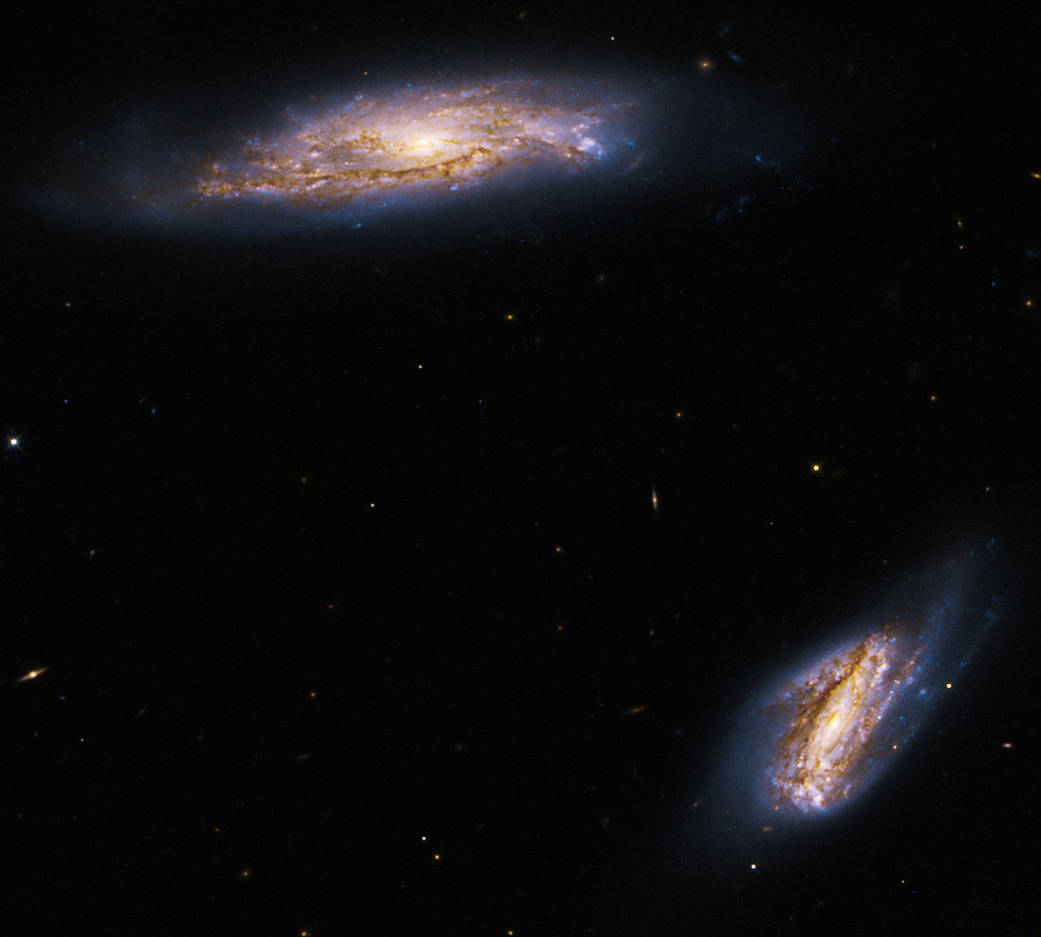Two peculiar spiral galaxies are in the latest image release from the Hubble Space Telescope. The two galaxies, collectively known as Arp 303, are located about 275 million light-years away from Earth. IC 563 is the odd-shaped galaxy on the bottom right while IC 564 is a flocculent spiral at the top left.
Fittingly, these two oddball galaxies are part of the Atlas of Peculiar Galaxies, which is a catalog of unusual galaxies produced by astronomer Halton Arp in 1966. He put together a total of 338 galaxies for his atlas, which was originally published in 1966 by the California Institute of Technology.

What Arp wanted to do in his catalog was provide examples of the different kinds of peculiar structures found among galaxies. While most of the entries in the catalog consist of single galaxies, some of the objects were entered as interacting galaxies, and others as groups of galaxies.
Interacting galaxies usually have a distorted shape, while galaxy groups are simply gravitationally bound to each other but not necessarily close enough to each other to induce major structural changes.
While the two galaxies in Arp 303 aren’t exceptionally close to each other, they do look distorted. Therefore, Arp entered Arp 303 as “unclassified.” Objects 298–310 in his atlas are considered unclassified, and they are mostly interacting galaxy pairs.

Since the Hubble Space Telescope is able to zoom in on the individual galaxies with its multiple instruments, this image is actually created from two separate Hubble observations of Arp 303. The first used Hubble’s Wide Field Camera 3 (WFC3) to study the pair’s clumpy star-forming regions in infrared light. The Hubble team said that galaxies like IC 563 and IC 564 are very bright at infrared wavelengths and host many bright star-forming regions.
The second observation was taken with Hubble’s Advanced Camera for Surveys (ACS) to take quick looks at bright, interesting galaxies across the sky. The observations filled gaps in Hubble’s archive and looked for promising candidates that Hubble, the James Webb Space Telescope, and other telescopes could study further.
Source: NASA

